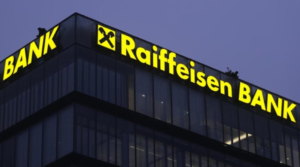
Ukraine’s nominal gross domestic product (GDP) amounted to UAH 1 trillion 923.1 billion in the first quarter of 2025, the State Statistics Service reported on Tuesday.
It confirmed the estimate of real GDP growth of 0.9% by the first quarter of 2024.
In addition, according to the State Statistics Service, the change in the deflator in the first quarter of this year was 16.9%, while in the fourth quarter of last year it was 12.8%.
As reported, in the IMF macroeconomic forecast updated in late June, the estimate of Ukraine’s nominal GDP in 2025-2027 was increased by about UAH 150 billion due to the revised GDP deflator from 12% to 13.5% this year: UAH 8.87 trillion this year, UAH 10.19 trillion next year, and UAH 11.32 billion in 2027.
In April, the NBU lowered its expectations for Ukraine’s economic growth this year to 3.1% from 3.6% in its previous January macroeconomic forecast, and from 4.0% to 3.7% in the next year.
According to the State Statistics Service, Ukraine’s real gross domestic product (GDP) growth slowed to 2.9% in 2024 from 5.5% in 2023. In the fourth quarter of 2024, the country’s GDP decreased by 0.1% compared to the corresponding quarter of 2023.
According to the State Statistics Service, Ukraine’s nominal GDP last year amounted to UAH 7 trillion 658.7 billion, with a change in the deflator of 12.3%, including UAH 2 trillion 194.4 billion in the fourth quarter, with a change in the deflator of 12.8%.

Ukraine’s economy in 2025 will grow by 4.9% with a slight decrease in inflation rate compared to this year to 8%, such macro forecast of Raiffeisen Bank (Kiev) was shared by the head of its board of directors Alexander Pisaruk.
“As for the dollar exchange rate, we expect devaluation of about 8% in 2025, and the exchange rate itself will be 45.5 UAH/$1 at the end of 2025. The baseline scenario is based on the hypothesis that security risks will improve from the second half of 2025,” he said in an interview with Interfax-Ukraine.
Pisaruk noted that the bank always does stress tests taking into account not only the baseline scenario, but also the best and worst case scenarios.
“But we do not have two fundamentally different development scenarios. All preliminary forecasts on the end of the war did not come true. The head of the NBU said this at the meeting of the European Business Association, and I am ready to sign these words that let’s stop predicting and making mistakes, and let’s just work,” – said at the same time the head of Raiffeisen.
According to him, even if the ceasefire is at the end of the first quarter, it will not dramatically affect performance in 2025.
“It could have an impact on 2026. So even such important things affect with a certain lag. 2025 will be influenced by the current dynamics of inflation growth and the need to curb it,” Pisaruk said.
He added that he would not be surprised if the National Bank has to raise the discount rate as a result of faster-than-expected acceleration of inflation.
“Regarding deposit and lending rates in hryvnia, we do not expect them to deviate significantly from current levels,” the banker pointed out.
He reminded that this process began back in July, and the main factor is the dynamics of the NBU discount rate, which is very likely to be stable until mid-summer 2025.
“But the rates on deposits in US dollars and euros may slightly decrease in response to the relevant decisions of the Fed and the ECB, although they remain quite low in Ukraine now,” – suggested the head of Raiffeisen Bank.
Commenting on the impact of the situation on the front on the mood of the population and business, he stated that this is reflected in the foreign exchange market.
“We observe a significant increase in demand for cash currency, although the supply also remains high. This leads to an increase in interventions by the National Bank, which, fortunately, has reserves for this purpose, formed at the expense of international currency aid,” Pisaruk said.
According to him, the situation now seems quite manageable, as the external aid next year looks sufficient to finance the budget deficit and replenish the NBU’s foreign exchange reserves. The CEO also said that Raiffeisen Bank remains the main supplier of cash currency to Ukraine.
“And who is number two, I don’t even know, because the gap is huge. This is a complicated business – you need to know the counterparties, provide logistics. We know how to do it and have been doing it for decades”, – he noted.
As reported, the GDP of Ukraine, according to the State Statistics Committee, in 2023 grew by 5.3% after a decline of 28.8% in 2022. The National Bank of Ukraine in late October raised the forecast of economic growth for 2024 from 3.7% to 4%, and for 2025 – from 4.1% to 4.3%. At the same time, the NBU in late October worsened the inflation forecast for 2024 from 8.5% to 9.7% and worsened it for 2025 from 6.6% to 6.9% after it fell to 5.1% in 2023 after jumping to 26.6% in 2022. The National Bank of Ukraine (NBU) on November 27 lowered the official hryvnia exchange rate to 41.6010 UAH/$1, the lowest value in its history. In general, since the beginning of 2024, the dollar at the official rate has appreciated by 9.5%, or by UAH 3.59, and since the transition of the National Bank on October 3, 2023 to the regime of managed flexibility – by 13.8%, or by UAH 5.03.